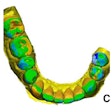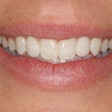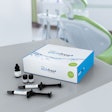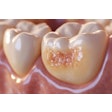
The debate over the discontinuation of anticoagulant agents before and after dental procedures has raged for many years now, with strong arguments on both sides of the issue. The addition of several new anticoagulants in recent years has only added some confusion.
Proponents of the use of these agents in patients undergoing dental procedures contend that by discontinuing the agent, the risk of inducing a potentially life-threatening stroke, myocardial infarction, pulmonary embolism, or deep vein thrombosis far outweighs the benefit of reducing the chance of a possibly significant bleeding event.
 Tom Viola, RPh.
Tom Viola, RPh.This is especially true, they note, in light of the fact that dental treatment rarely involves trauma to major blood vessels and, thus, any resulting serious hemorrhagic complications. In addition, dental practitioners have agents available that can effectively promote rapid local hemostasis, if necessary.
Those against the use of anticoagulants contend that in certain procedures, such as multiple extractions, sinus lifts, or oral surgeries, even moderate bleeding would be disadvantageous in achieving optimum outcomes. In addition, they believe it is nearly impossible to anticipate if a dental procedure will induce a potentially significant bleeding event, which most dental practitioners are ill-equipped to manage.
Discontinuation proponents will also note that the potential for a significant bleeding event is highly variable from patient to patient, especially given the fact that these patients may also be taking other medications for other conditions; these medications may enhance the effect of anticoagulant agents in unpredictable ways, further increasing the risk of peri- and postoperative bleeding.
Coumadin (Bristol-Myers Squibb) has long been a standard in anticoagulant therapy. You might know it by its generic name, warfarin. Thus, many practitioners are familiar with its effects and the medical management of Coumadin-induced significant bleeding events, including the use of known antidotes such as vitamin K. International normalized ratio monitoring (known as INR monitoring) has been used successfully in determining the relative risk of hemorrhage for certain procedures in patients taking this pharmaceutical.
Over the past several years, new direct-acting oral anticoagulants (DOACs) have emerged that compete with Coumadin for favor among prescribers in the treatment of coagulopathies, especially atrial fibrillation. These include Pradaxa (Boehringer Ingelheim) (known as dabigatran), Xarelto (Janssen) (rivaroxaban), Eliquis (Bristol-Myers Squibb) (apixaban), and Savaysa (Daiichi-Sankyo) (edoxaban).
“Routine discontinuation of oral anticoagulant therapy ... may put the patient at unnecessary risk for severe morbidity and mortality.”
Unlike Coumadin, which reduces the synthesis of vitamin K-dependent coagulation enzymes, these agents work directly against activated clotting factors, either factor II (thrombin) or factor Xa (the activated form of the coagulation factor thrombokinase). Thus, a major advantage -- and selling point to patients -- of these newer agents over Coumadin is that they do not require INR monitoring. However, this also means that it is more difficult to assess the risk of serious bleeding events in patients taking these agents.
In addition, medical management of serious bleeding events in patients taking Xarelto, Eliquis, and Savaysa may be more difficult because, unlike Coumadin and Pradaxa, these newer anticoagulants do not have specific antidotes to reverse their effects. This only serves to further complicate the debate over the use of anticoagulant agents in patients undergoing dental procedures.
Two independent studies concluded that there is minimal incidence of peri- and postoperative bleeding in patients medicated with DOACs who are undergoing dental procedures. Thus, discontinuation of these agents before or after dental procedures may be unnecessary.
A study conducted at King's College Hospital in London and published in the British Dental Journal (February 2017, Vol. 222:4, pp. 245-249) involved 82 patients receiving DOAC therapy, who underwent 111 oral surgical procedures, the majority of which were dental extractions. In 35 (32%) procedures, advice was given to omit the DOAC, either before or after treatment. However, there was no bleeding following the majority of procedures. Persistent bleeding followed 15 (13.5%) procedures, of which seven (6.3%) required specific intervention. Based on their findings, the authors concluded in their abstract that the majority of patients prescribed DOACs can undergo dentoalveolar procedures safely.
A second study conducted at Tel Aviv University and published in Quintessence International (May 2017, Vol. 48:6, pp. 503-509) involved a total of 111 patients receiving DOAC therapy; 72 underwent a total of 305 oral procedures in 115 sessions. One "major" (0.9%) and six "minor" (5.2%) events were recorded, which were ultimately managed with local hemostasis. The overall frequency of bleeding events was 6.1% per session.
Based on their findings, the authors concluded in their abstract that the risk of bleeding in dental patients using DOACs is low with no major consequences. Thus, the data did not support stopping DOACs prior to dental treatment, regardless of the complexity or the extent of the procedure.
While there may still be some belief that oral anticoagulant therapy must be discontinued before dental treatment to prevent serious hemorrhagic complications, the potential for excessive bleeding with continuation of therapy must always be weighed against the potential for serious adverse effects resulting from discontinuation of such therapy. For patients undergoing dental procedures, routine discontinuation of oral anticoagulant therapy, especially DOACs, may put the patient at unnecessary risk for severe morbidity and mortality.
Thomas Viola, RPh, is a clinical educator, professional speaker, and published author in the areas of oral pharmacology and local anesthesia. Tom is a member of the faculty of 10 dental professional degree programs. For more information on this and other pharmacology topics, as well as a list of dates and locations where you can attend his latest seminar, visit his website at www.tomviola.com.
The comments and observations expressed herein do not necessarily reflect the opinions of DrBicuspid.com, nor should they be construed as an endorsement or admonishment of any particular idea, vendor, or organization.



















